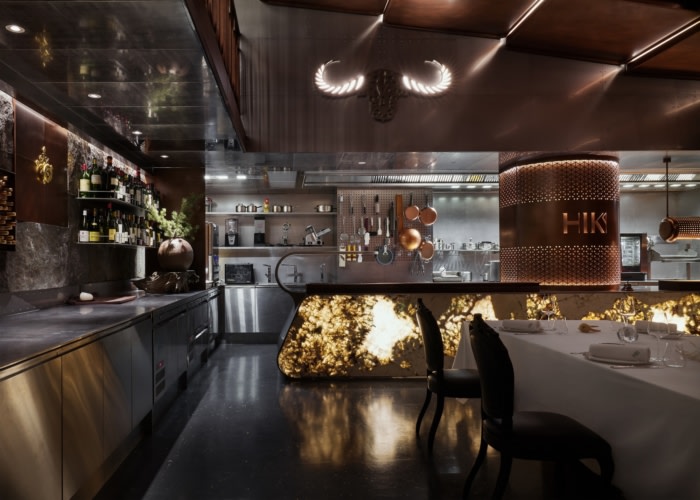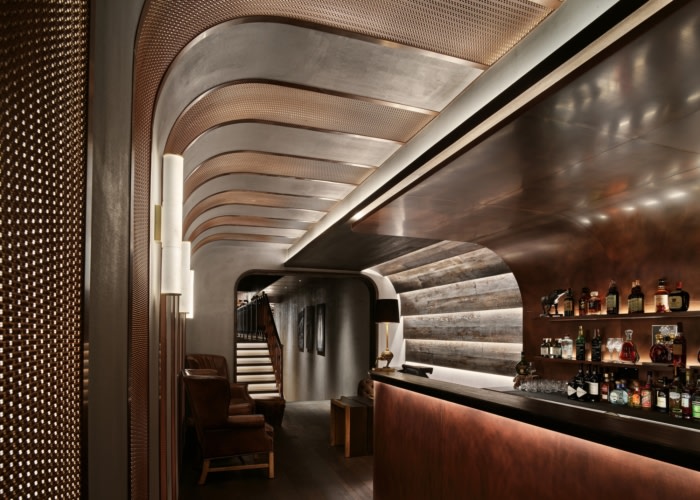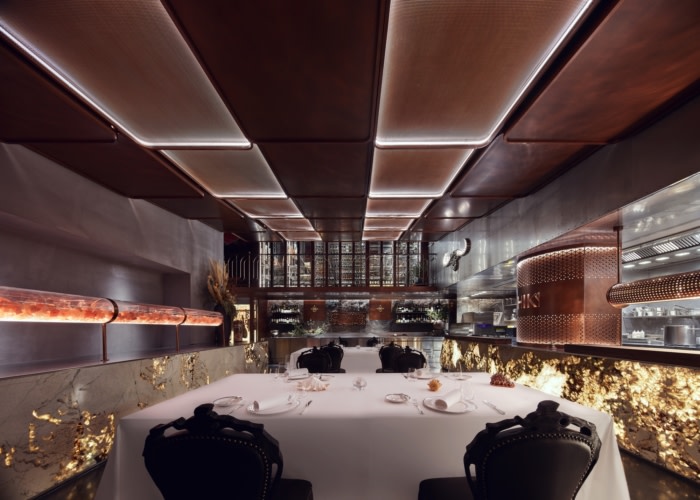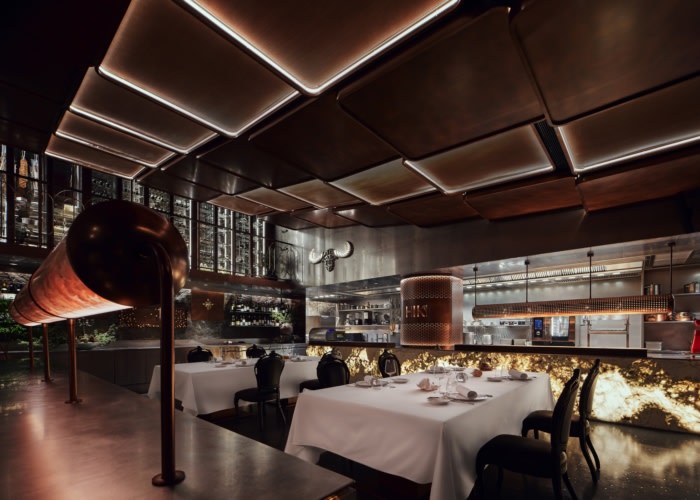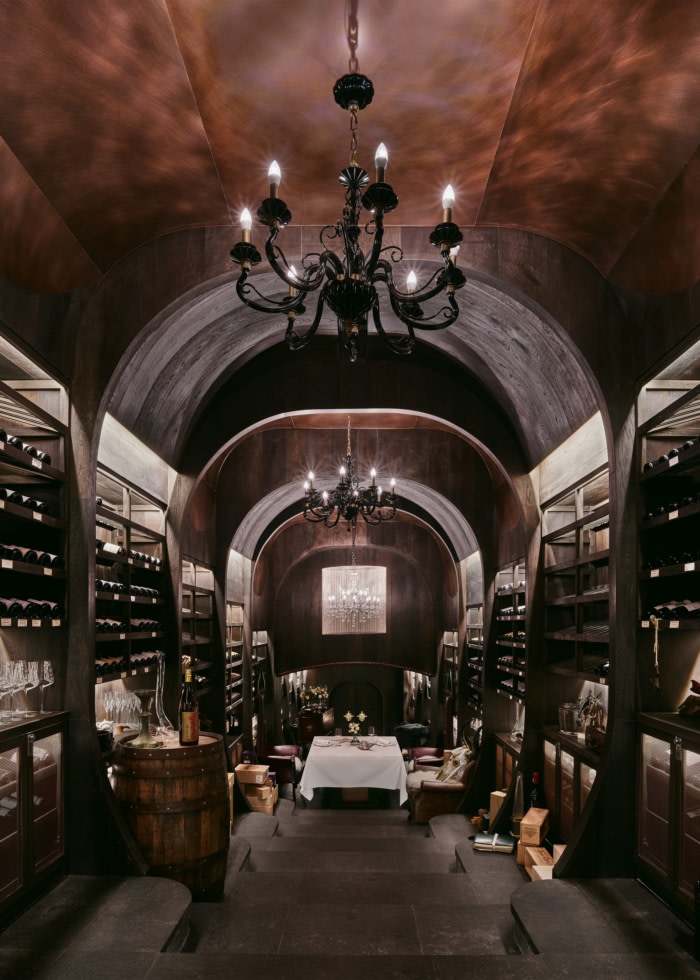HIK9 Restaurant
JFR Studio completed the HIK9 Restaurant as a place that will give patrons a unique experience of sophistication and luxury while embracing an industrial feel in Shanghai.
Close to Shanghai’s busiest Huaihai Road, the founder of Stonesal, a black pearl restaurant, wants to provide intimate comfort for friends and regulars in an era of rapid and iterative change, where people find it hard to stop.
As the designer of many collaborations, JFR Studio has a good consensus with the designer and owner. The restaurant has a dry-aging room made from Himalayan rock salt, an open food storage area, and a professional wine cellar for an intuitive view and selection of ingredients. Also, an open kitchen allows guests to enjoy the display of different cooking techniques, creating a healthy atmosphere of mutual trust, and creating a multi-functional dining space.
An urban light luxury mixed with an industrial retro style is the main style of this design. A large amount of bronze and black walnut is used in the space with floodlighting to give a warm and natural feeling.
To enable people who come here to experience each part of the private kitchen, the designer sets up a progressive moving route.Through a hidden door next to the bar counter at Stonesal, the private kitchen entrance, namely the bar area, is accessed through a metal cast LOGO wall. This design not only ensures the integrity of the entrance but also increases the sense of mystery. The bar area also offers guests a place to socialize or relax for a drink.
The passage connecting the bar area and the dining area uses a fair-faced concrete wall to highlight the essence of architecture, indicating the authenticity of food materials. The LOGO of “Hiding in the Kitchen” gives people surprise and imagination, making guests long to come to the restaurant to open up a journey of delicious food.
The architecture was originally a bicycle parking garage in the building, which is cleverly divided into two parts: one is the parking area’s terrace, which now houses the dining area and the open kitchen. The ramps are designed as professional wine cellars to store rare and precious wine.
By considering for the diners, the restaurant’s interior design of the largest piece of dining area does not add too many elements but leaves guests a large area to enjoy the food. Besides, a small compartment is set up in the restaurant’s upward sloping space, serving as a storage area for food materials, such as wine, cheese, and ham.
The original ramp for the bicycle is used as a wine cellar. The slope part is adjusted as a ladder, and a striking red wine shelf of white oak is installed. The staircase in the middle forms a footpath from top to bottom, and it provides several resting platforms for wine selection. Important guests can also be directly invited to the wine cellar to visit, select and taste the wine.
The relationship between humans and nature has always been mutual demand and symbiosis. Under the urban background, the designer reconsiders the meaning of food and returns to the origin of food, upgrading the simple solution to “eating” to the pursuit of a spiritual level in satisfying “eating”. It is different from the traditional restaurant design so that people’s feelings and the space style are fully expressed.
Design: JFR Studio
Photography: Zhu Hai



